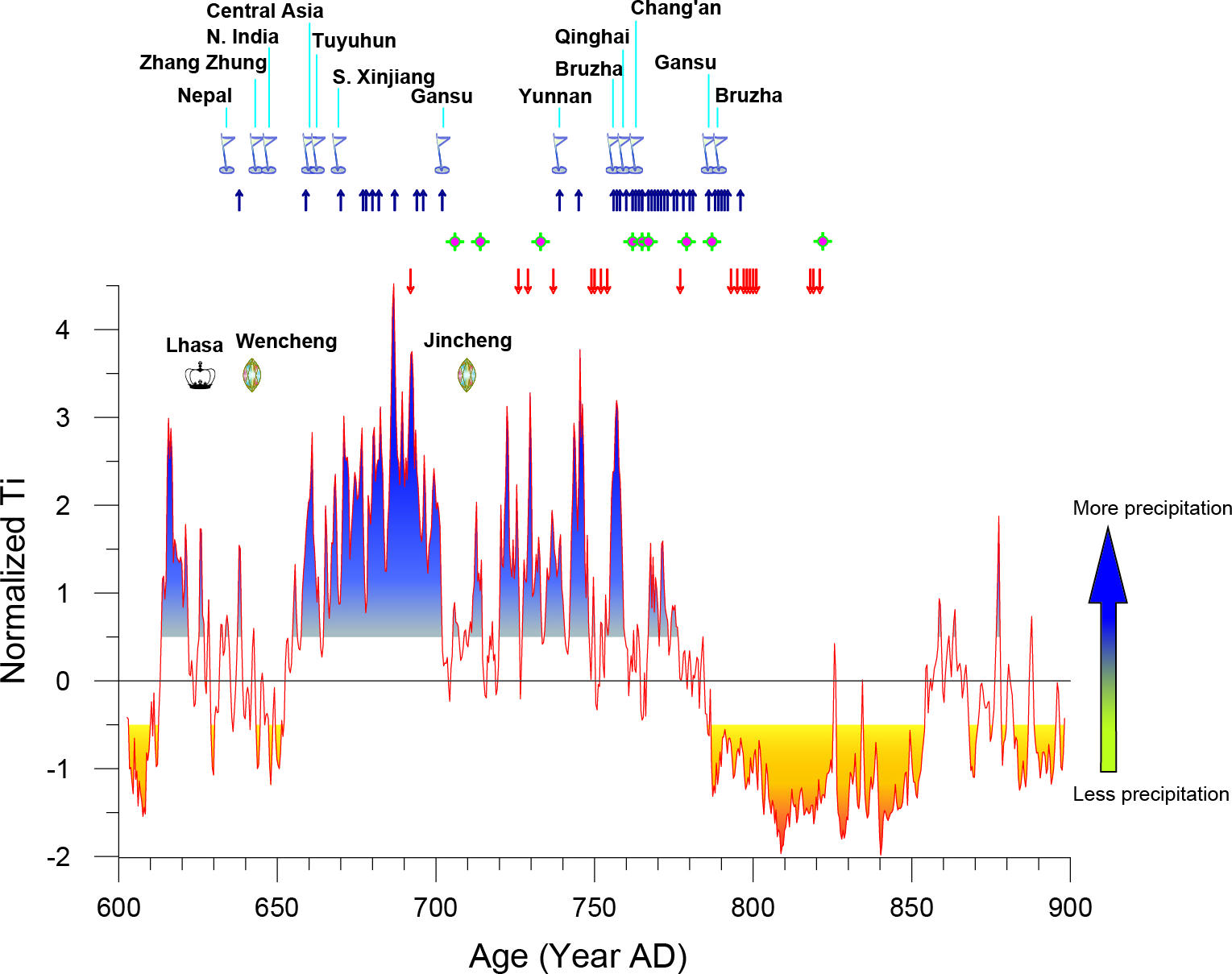Scientists traced a 2000-year climate history of the Tibetan Plateau, concluding that periods of warming and cooling mirrored the Tibetan Empire’s rise and fall. They suggest that past climate changes significantly impacted human activities, like farming, on the Plateau. (Artist’s illustration)
New research conducted by Dr. Juzhi Hou, Dr. Fahu Chen, and Dr. Kejia Ji has unveiled significant findings. The study was published in the journal Science Bulletin.
The researchers acquired a detailed climate history of the last 2,000 years from the layered sediments in Lake JiangCo, located on the central Tibetan Plateau. The data indicates a warm and moist climate during the 7th to 9th centuries AD, followed by a shift to colder and drier conditions. This climatic variation aligns with the expansion and decline of the Tibetan Empire, suggesting that changes in climate might have played a role in the empire’s rise and fall.

The element titanium is an allothigenic element that reflects changes in precipitation. The dry and wet periods reflected by titanium are highly consistent with the timing of historical events such as the treaties and wars of the Tibetan Empire. Credit: Science China Press
During the preliminary field investigation, the researchers found that the varved sediment in JiangCo, a lake on the central Tibetan Plateau, was well-preserved. Through earlier varve counting and other radiometric dating methods, the time range of a gravity core of up to 1 meter covering the past 2000 years was determined.
Subsequently, high-resolution XRF elements scanning and carbonate carbon/oxygen isotope analysis were performed on the sediment, and the temperature and precipitation records for the past 2000 years were reconstructed using biomarkers such as alkenones. The results showed that the 7th-9th century AD was an unusually warm and humid period.
The varves of JiangCo are annual varves, each layer divided into coarse-grained and fine-grained sub-layers. Credit: Science China Press
The researchers compared this period with historical literature and found that it coincided with the only unified local regime, the Tibetan Empire, which existed on the Tibetan Plateau at that time. The changes in warm and humid climates and cold and dry climates were highly correlated with the foreign policy changes of the Tibetan Empire.
Combined with the ecological niche model, the researchers simulated the area of highland barley cultivation during the warm and humid period of the 7th-9th centuries AD and the subsequent cold and dry period, which differed by about 10.88 million hectares.
In the ecologically fragile environment of the Tibetan Plateau, climate change is one of the factors that constrain human activities. The latest research results show that warm and humid climates promote the development of agriculture and animal husbandry on the plateau, while cold and arid conditions have negative effects on agriculture and animal husbandry.
Climate change played an important role in the rise and fall of the Tibetan Empire. Today, with the warming and humidification of the Tibetan Plateau, studying the human-environment interactions in the past has important implications for modern responses to climate change.
Reference: “Climate change fostered rise and fall of the Tibetan Empire during 600–800 AD” by Juzhi Hou, Kejia Ji, Erlei Zhu, Guanghui Dong, Tao Tong, Guoqiang Chu, Weiguo Liu, Wenxiang Wu, Shuilong Zhang, Jade D’Alpoim Guedes and Fahu Chen, 2 May 2023, Science Bulletin.
DOI: 10.1016/j.scib.2023.04.040
>>> Read full article>>>
Copyright for syndicated content belongs to the linked Source : SciTechDaily – https://scitechdaily.com/climate-change-the-unseen-power-behind-the-rise-and-fall-of-the-tibetan-empire/